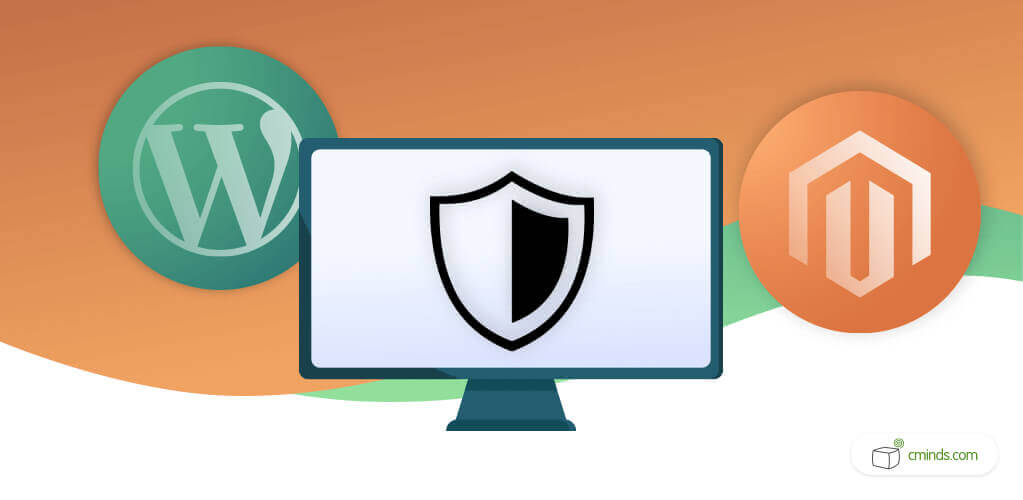What’s the big talking point as we enter 2024? Cybersecurity. It’s time to review the most dangerous online threats.

Cybersecurity is providing the glue as innovation explodes in every corner. It can diminish the bad and support the good for applying leading-edge innovation. It can also reduce risk from older vulnerabilities.
This article discusses online security threats to be aware of in 2024. The main focus is on those threats relating to WordPress and Magento.
December 2024 Offer – For a Limited Time Only:
Get WordPress Essential Security Tools for 20% off! Don’t miss out!
WordPress Security Vulnerabilities

Security vulnerabilities concern you if you own a website powered by WordPress. We’ll outline the most common WordPress security vulnerabilities in this section. We also give you steps you can take to shield and secure your site.
Brute Force Attacks
A brute force attack aims at being the most straightforward technique to gain access to a site. It is not like a hack, which centers on weaknesses in software. Still, definitely one of the most dangerous online threats.
Instead, it tries usernames and passwords, over and over again, until it gets in. It is an attack on the weakest link in any website’s security: you.
The majority of attacks assume people are using the username “admin.” That username was the default in early versions of WordPress.
To prevent brute force attacks, change your username from admin. Also, use strong passwords that are hard for others to guess.
Use a two-factor authentication plugin to mitigate this issue.
File Inclusion Exploits

Local/remote file inclusion exploits are frequent on WordPress sites. These attacks involve PHP code, which is executable. WordPress is built on PHP code, and it is the language on which servers run.
You can secure your site, though, with the Essential Security Bundle. This plugin is available from CreativeMinds. It improves the security of your site, keeping it safe from hackers and exploiters.
SQL Injections

A code injection via SQL is one of the most dangerous intrusions that can occur on your website. WordPress relies on SQL databases, which has a significant effect on security. The standard database management system used by WordPress is MySQL.
Thus, every WordPress site has a dedicated MySQL database. Many SQL injections take place through the forms on your site.
It’s essential to control data submissions and field entries. It’s also crucial to keep track of who uses the database.
XSS Attack (formerly known as Cross Site Scripting)

Cybercriminals can carry out an XSS attack if you don’t secure your web applications. A classic example is where the criminal posts a message in a forum that redirects a user to a fake site. The criminal then harvests the user’s cookies.
This action makes it possible for him or her to log in with different identities. The principle of a WordPress XSS attack is to insert malicious code. The hacker inserts this code in scripting language into a vulnerable website. The easiest way for users to avoid this type of attack is to disable JavaScript in the browser.
Malware
The popularity of WordPress makes it a target for web-based malware. Some of its plugins have security loopholes, and others are out of date. Many sites are vulnerable to drive-by downloads, backdoors, malicious redirects, and pharma hacks. Malware is not new, but still one of the most dangerous online threats.
Each type of malware has a different prevention method. For example, you can close backdoors by making your environment hard to access. You can also close them by killing PHP execution.
Magento Website Security Threats

The personal information stored on e-commerce sites is a significant lure for hackers. Sixty-two percent of Magento stores have at least one vulnerability.
Site owners need to secure their customers’ payment information. Data stolen from your site can harm your reputation. It can also spell much trouble for your customers.
Malicious PHP Scripts

In mid-2019, a new threat arose for Magento-powered stores. This threat was in the form of a malicious PHP script known as Magento Killer, which alters the core_config_data table, allowing the hacker to retrieve the payment info from your store.
It configures the Magento core function to access clients’ credit card information. It also allows the hacker to alter the PayPal merchant account associated with your site.
To protect your site from this threat, make sure your version of Magento is up to date. It’s also essential to enable multi-factor authentication. This action ensures that only you and the people you allow have access to your site’s admin area.
Weak Password Exploits

Ironically, one of the most dangerous online threats comes from inside.
You may also need to put in place a strict password policy. Users should have to change passwords often and not reuse old ones. Also, never use a guessable email such as admin@websitename.com.
Bad Security Practices
Another measure you can take to secure your site is to schedule regular backups of your content. Scan your site for external vulnerabilities and check it for internal threats.
Use a web application firewall. Consider partnering with a web security specialist to monitor your site. They will help you with both internal and external dangers so you are prepared for the most dangerous online threats.
Conclusion

New online threats appear everyday, and the old ones don’t go away – they can transform and adapt to new conditions. And even though there are lots of new cyber threats, don’t forget that social engineering stays one of the most popular vulnerabilities.
The law can hold you accountable for consumer data violations in your online store. Thus, you need to be serious about the security of your online store.
Pay extra attention to the monitoring of server resources and web assets. Also, scan your web assets to find malware and other markers of compromise.


